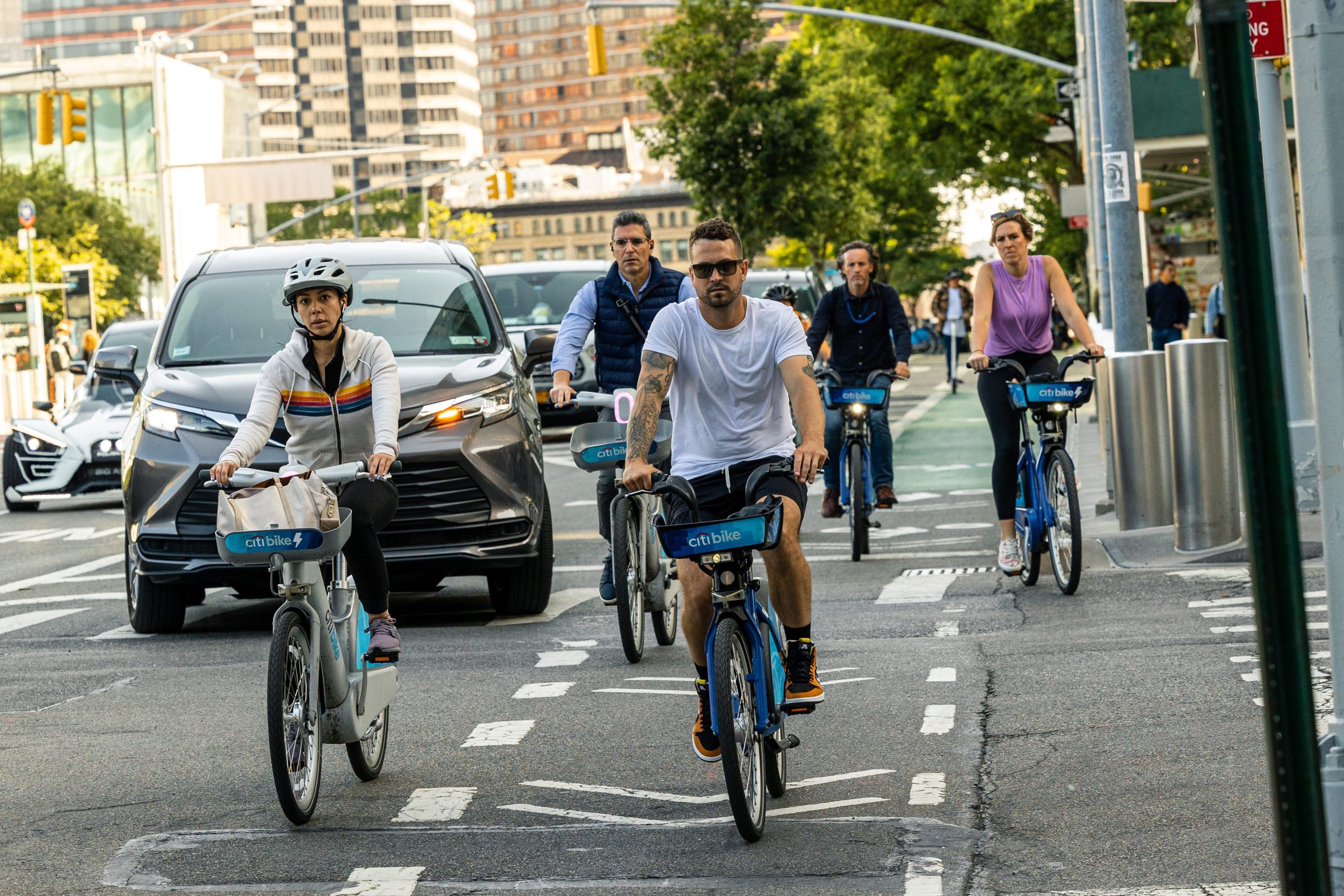
The death of Derek Lake, killed one month ago at age 23 when his bicycle tripped a metal plate on Houston Street, hints at a tragedy shared by all New Yorkers: City Hall's continued insistence that the ultimate goal of a New York City street is to move as many cars and trucks each day as physically possible.
Houston Street, from its ramps onto East River Park to its flow into kayak launches at the Hudson, is undergoing a $30 million reconstruction project. When it ends by 2008, it will add five left-turn bays for cars and slightly widen a few sidewalks where street vendors work the edge of SoHo. Transportation spokesperson Chris Gilbride says the project will cut a lane of traffic from some blocks and not eliminate any pedestrian refuge areas.
But Livable Streets advocates say the DOT's approach to the project misses a historic opportunity to transform Houston into a truly great urban boulevard, designed not just to move motor vehicles, but to create space for pedestrians, bikes, buses, cafe tables, merchants and the full diversity of New York City street life.
Community members and former city officials say the Department of Transportation alternated between bullying and ignoring neighborhood pleas for bike and pedestrian safety during the reconstruction project. "The community expressed outrage repeatedly," says Dirk McCall, who headed City Councilmember Alan J. Gerson's staff during meetings on the Houston Street project in 2001. "They wanted more crosswalks."
Charle de Cafiero, a former member of Community Board 2 who lives near the busy corner of Houston and Lafayette, echoes this. He says his neighbors' insistence that Houston Street serves as a local "Main Street" and not just a regional truck conduit met scorn from DOT officials, prompting them to deride the community's ideas as "anti-car." De Cafiero says the non-collaborative atmosphere poisoned hopes for innovations that could have made Houston a model "Livable Street."
There's no lack of vision or precedent for how a "Livable" Houston Street could look.

"I would try to eliminate any turning movement that we can live without and see if we can recapture more space for a different mode of transportation," says Andy Wiley-Schwartz, an executive with Project for Public Spaces. The land uses are pretty good, but it needs some help in terms of getting safer to walk or bike along."
De Cafiero cites a suite of low-cost improvements, from markings or colors on crosswalks to finding signs for confusing subway changes, which the city could have considered. Transportation Alternatives executive director Paul Steely White imagines a more energetic bus schedule, widened sidewalks and a physically-separated bike lane. DOT also could have considered traffic calming measures to discourage and slow traffic turning off of Houston Street onto local, neighborhood streets.
Instead, says de Cafiero, DOT officials "worked off a 1950's traffic engineering model" and killed community input. "[Commissioner] Iris [Weinshall] compared [the addition of turning bays] to work she had done in her own neighborhood, and people tried to explain that Prospect Park is different from Houston Street" recalls McCall. "Alan and [current City Council speaker] Christine Quinn wrote a letter [expressing these concerns] and Weinshall wrote back probably the most offensive letter I've seen a commissioner write." McCall termed the project "a travesty."
Others describe it as a missed opportunity.
"The city has a big list of reconstruction projects, which are known years in advance," notes John Kaehny, former head of Transportation Alternatives. "Political jockeying goes on. As far back as 1993, it was known that Houston would be reconstructed. Yet the final design involves turning bays which are extremely negative for pedestrians. It's a traffic capacity increase in two of the ZIP codes that have some of the lowest car ownership in the US."
This ad hoc, embittering story could infuse street reconstructions across the boroughs. To avoid future mistakes, White urges the mayor's office to promulgate citywide street design standards that would make it "a matter of course" to widen pedestrian and bike paths in any makeover. Instead, he says, the city has a hodgepodge of approaches that ultimately tend to favor the movement of motor vehicles.
"What they did on Queens Boulevard in terms of safety provisions is not what they're doing on Houston," notes White. "Safety standards should be non-negotiable, but DOT will defer to community boards when it suits their purpose. And right now their purpose is more cars and trucks."
White takes heart that the mayor's office seems to be "asking the right questions" about how streets can absorb the million new residents New York expects. And de Cafiero trusts the mayor to "read the riot act" to commissioners who show reluctance to collaborate. Such steps could open a path out of gridlock. Even if they come too late for Houston Street.





